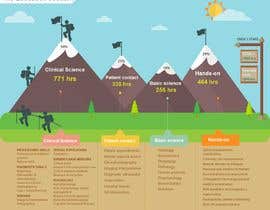Prepare Yourself To Discover The Interesting Cellular Communications Of Cold Laser Therapy And Its Application Of Light For The Function Of Recovery. Dive Even More Into The World Of Scientific Research!
Prepare Yourself To Discover The Interesting Cellular Communications Of Cold Laser Therapy And Its Application Of Light For The Function Of Recovery. Dive Even More Into The World Of Scientific Research!
Blog Article
Content Composed By-Walls Roberson
You may have become aware of cold laser treatment as a promising therapy choice for various conditions, yet have you ever before asked yourself exactly how it actually works with a cellular level? Comprehending the mechanisms behind this therapy can clarify its efficiency in advertising recovery and reducing inflammation. By discovering the scientific research behind cold laser treatment, you'll acquire insights into the fascinating ways in which light can influence mobile processes and assist in tissue repair work.
Just How Cold Laser Treatment Works
To understand how cold laser therapy functions, you need to understand the basic concepts of exactly how light energy communicates with biological tissues. Cold laser treatment, likewise known as low-level laser treatment (LLLT), utilizes certain wavelengths of light to penetrate the skin and target hidden cells. Unlike the intense lasers used in surgeries, cold lasers emit low levels of light that do not produce heat or create damages to the tissues.
When these mild light waves reach the cells, they're soaked up by parts called chromophores, such as cytochrome c oxidase in mitochondria. This absorption sets off a series of organic reactions, including enhanced mobile energy manufacturing and the launch of nitric oxide, which enhances blood flow and lowers inflammation.
Additionally, the light power can additionally boost the manufacturing of adenosine triphosphate (ATP), the energy money of cells, assisting in cellular repair service and regeneration processes.
Fundamentally, cold laser therapy uses the power of light energy to promote healing and relieve pain in a non-invasive and gentle manner.
Systems of Action
Exactly how does cold laser treatment in fact function to produce its therapeutic results on biological tissues?
weight loss stamford ct , additionally called low-level laser therapy (LLLT), operates with a procedure called photobiomodulation. When the cold laser is related to the skin, the light energy passes through the cells and is soaked up by chromophores within the cells.
These chromophores, such as cytochrome c oxidase in the mitochondria, are after that promoted by the light energy, causing a cascade of organic reactions. One essential system of activity is the improvement of mobile metabolism.
The taken in light energy enhances ATP production in the mitochondria, which is crucial for cellular function and repair work. Additionally, cold laser therapy helps to decrease swelling by inhibiting inflammatory mediators and advertising the launch of anti-inflammatory cytokines.
This anti-inflammatory impact contributes to pain alleviation and cells healing.
Restorative Results
Comprehending the restorative effects of cold laser therapy entails recognizing exactly how the improved cellular metabolic process and anti-inflammatory residential properties contribute to its positive outcomes on biological cells.
When acupuncture stamford ct is related to the damaged area, it boosts the mitochondria within the cells, causing enhanced production of adenosine triphosphate (ATP), which is crucial for cellular feature and repair. This increase in cellular energy speeds up the recovery process by advertising tissue regrowth and minimizing inflammation.
Moreover, the anti-inflammatory buildings of cold laser therapy aid to lower pain and swelling in the targeted location. By preventing inflammatory moderators and promoting the launch of anti-inflammatory cytokines, cold laser treatment aids in alleviating discomfort and improving the overall healing feedback.
This decrease in inflammation not only offers prompt alleviation however also supports long-term cells repair.
Final thought
In conclusion, cold laser therapy functions by boosting cellular fixing and tissue regeneration with photobiomodulation. Its anti-inflammatory buildings provide discomfort alleviation and decrease swelling by inhibiting inflammatory arbitrators.
This therapy provides a thorough technique to healing, delivering both instant relief and long-term tissue repair service benefits.
Through its devices of action, cold laser treatment confirms to be an efficient and appealing therapy choice for a variety of conditions.
